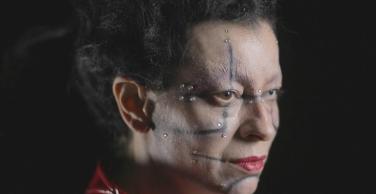Exoskeletons like the one shown here are prostheses for activating the body's motor functions in a controlled manner. They are used in neurophysical therapies, for example in patients with multiple sclerosis. With a long tradition in the field of art, Amaia's creative experimentation on the boundaries between machine and organism raises questions about what is considered a "normal body", as well as about the ability of technology to influence brain plasticity and learning processes. Amaia Vicente uses exoskeletons for therapeutic but also artistic purposes. She experiments with the possibilities of negotiation between these categories; and this negotiation is scientific, technical and political. The use of exoskeletons also raises some questions in terms of privacy and care, about the use of biodata obtained in therapies and medical research projects; questions about the use aimed at the advancement of scientific knowledge and the development of public health, about trade regulated by patents and private licenses or about the ethics of Open Source and those based on DIY-DIWO methodologies. Collaborative design practices represent new opportunities for research with robots and other artificial devices at the intersection of artistic experimentation and biotechnological activism.

